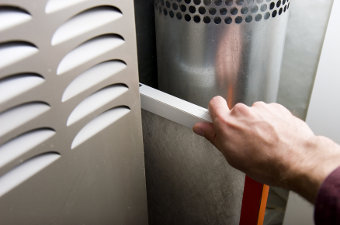Furnaces
Last Updated: 02/27/24
A heating unit whose function is the combustion of fossil fuel for space heating with forced hot air. Unit must include burner(s), heat exchanger(s), blower(s) and connections to heating ducts.
 Product Details
Product Details
To the maximum extent practicable, federal agencies are required to buy sustainable products, which are products that meet the purchasing program(s) listed below.
If there is more than one program listed below, agencies are directed to prioritize multi-attribute products, which meet statutory purchasing program requirements (![]() ) and one or more required Environmental Protection Agency purchasing programs.
) and one or more required Environmental Protection Agency purchasing programs.
Review our frequently asked questions for more information.
|
Procurement Info
|
Where to Buy
|
|---|---|
 Legal Requirements
Lists federal requirements related to the purchase of this item, including applicable Federal Acquisition Regulation (FAR) requirements
Legal Requirements
Lists federal requirements related to the purchase of this item, including applicable Federal Acquisition Regulation (FAR) requirements
 Life Cycle Cost Savings
Life Cycle Cost Savings
Life Cycle Costing (LCC) aims to quantify the financial impact of a product over its entire life cycle to assist consumers in making decisions that will save them money over the long term.
An efficient product is cost effective when the utility costs saved over the life of the product exceed the additional upfront cost (if any) of the more efficient model. Energy Star considers both upfront costs and lifetime energy cost savings when setting required efficiency levels. Federal purchasers can assume that Energy Star-qualified products are life-cycle cost effective.
To calculate life cycle cost savings, explore these tools:
- NREL’s Levelized Cost of Energy Calculator
 can help estimate the cost of electricity as an input for your lifecycle cost calculations, accounting for both cost escalation and discount rates.
can help estimate the cost of electricity as an input for your lifecycle cost calculations, accounting for both cost escalation and discount rates.
 Guiding Principles
Guiding Principles
Contributes to meeting The Guiding Principles for Sustainable Federal Buildings
 Additional Guidance
Additional Guidance
Energy Star notes that different gas furnace efficiency requirements and labels are used for different regions of the country. Certified gas furnaces in the southern half of the U.S., where homes require less heat, will be labeled with a unique “U.S. South” ENERGY STAR logo. Certified gas furnaces in the northern half of the U.S. will be labeled with the standard ENERGY STAR logo.


 Energy Star
Energy Star